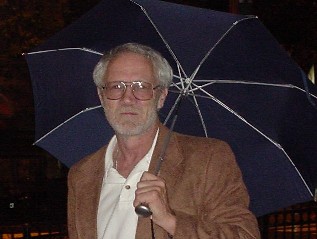Neal is a most interesting person, and I think you will find his visit very enlightening on how he uses his training to write for both adults and children. He has quite a sense of humor as well.
Born in Boston and grew up in in a place called Chelsea, a small city about 7 miles north of Boston. Received a B.A. in Psychology from Northeastern University in Boston and followed that up with a doctorate in School Psychology from Rutgers University in New Brunswick, New Jersey. I later established a private practice in Psychology and learned to embrace the “existential” and “humanistic” approaches to psychotherapy. A large part of my training as a Gestalt Therapist was a rather deep and enduring acquaintance dreams and dream work. What people are really telling us through their dreams has been a main focus throughout most of my writing and much of my art.
Tell us about the genre of your work.
My writing falls in “Self-Help” or “Psychology” categories. However, I am, basically, a simple storyteller. My book on relationships, Couples at the Crossroad-Finding the Path with a Heart, (available online at Amazon.com, BarnesandNoble.com and IUniverse.com) tells stories about couples whose partners need to establish their own values and esteem. The book is complete with scales measuring what I consider to be the three dimensions of love, i.e. Passion, Intimacy and Commitment—a throwback to my undergraduate days at Northeastern when I was involved with research and assessment techniques. However, I also help the reader measure destructive behavior, compatibility, and basic personality traits that either help or hinder the growth of relationships. There are many case studies and examples of dream therapy. Perhaps more important are a series of exercises readers can use to gain insight into their own behavior, their needs, the influence others have on their lives, their level of creativity, and the life scripts they wrote for themselves when they were barely old enough to walk.
I am more excited about the children’s stories I wrote several years ago (and of course am still writing because it just never seems to say what I want it to). There are ten all together, and again they are designed to teach as well as to entertain.
Harry Finds a Home is about a little man who lives in his hat, and when his friends and neighbors have no place to live, he keeps adding rooms until it is 12 stories tall. He wants to help his friends, yes, but he also wants to have a home of his own…what to do, what to do…can he have both? Yes…
Grandfather Wu and the Five Fingers tells the story of a wise old man who helps handicapped children discover how they be happy despite their disabilities…and then there is Paki and the Terrible Dreaded Two-Headed Troll and Chico and the Trapped Angel…
There are six others and each character became very dear to me as I worked out dialogue, motivation, and the solution to each one’s unique problems.
Writing can be very satisfying. It can also be maddeningly slow and tedious. Finding the right word and effective segues requires loads of time, concentration, and patience. When I retired several years ago, I found that other forms of art appealed to me. I began to pursue training in photography and photo-editing techniques. But even here, there appear to be two overriding themes: first, tell a good story and secondly, give the piece an ethereal quality—in short, each piece of art becomes a dream printed on canvas or paper (or, in my case, silk). My photo art can be found at www.FlowersForMyLady.Imagekind.com.
Why did you choose this genre?
I am afraid I had little to do with it. The genre picked me and I had little choice but to follow. One of the benefits (or side effects) of growing up in humble settings is that you begin to rely on relationships with friends, and you rely on stories and humor to communicate your needs, fears, and desires. Story telling became an extremely important part of my approach to therapy, then later my approach to my writing and now my approach to the visual arts.
How do you come up with the names of places and characters in your books?
I choose places that I am most familiar with, and I often name my characters after friends. In the case of one of my kids’ stories (Paki and the Terrible Dreaded Two-Headed Troll), because the story takes place in Africa, I used Swahili names (e.g. Tembe, is the Swahili word for Elephant). Half of the kids’ stories are true stories: “Joey the Invisible Boy” for example is really about a former patient who dealt with his fear about virtually everything—including his wife—by making himself “invisible”: if no one could see him, he believed, no one could hurt him. It must have worked, he told me, because the bullies at school never beat him up. Unfortunately, his wife did…
What is your favorite thing about your book?
What I like in all my writings—and in my photo-art as well—is the process of finding a solution to a seemingly impossible situation. How can couples overcome lifelong obstacles to healthy growth? What do people do when they find out that they are incompatible with their spouses or partners? How do people find their feet again, i.e., courage and strength so that they can make healthy decisions for themselves and their children? What can people do to change their life scripts, especially when the scripts have been written as tragedies—e.g. “Dying for a Drink”, “Getting High”, or “Getting Even.”
The same is true in the kids’ stories. How can Paki—a deaf eight year old—save his village from the Terrible Dreaded Two-Headed Troll? How can Joey the Invisible Boy learn to fight off the monsters that live in grandpa’s closet? How can Princess Marcela, Family Doctor, convince her dying mother that she still belongs in the home and not in a hospice setting? How can The Girl Who Couldn’t Talk help make her sick grandfather happy?
What is your writing schedule?
I save my writing and my other art work for after-hours. I work on creative projects religiously from 11 PM to 2 AM—one of the benefits of being retired. I enjoy the silence and the solitude. There is no room inside my head for more than one voice at a time...no TV or radio or telephones ringing.
What projects are you working on now, or plan for the future?
My next writing project will be a book called: “Children’s Dreams—What Kids Really Want to Tell Their Parents.” I am doing research for that book and have another one in mind as well. In addition, I am becoming more involved with my photography. I visit (horse) racetracks all over the U.S. shooting photos I can use to create picture books about jockeys, trainers, horse owners, and the horses themselves.
What kind of advice or tips to you have for someone who wants to write (especially mystery)?
Read, read, read! And, after you get through reading, go to the library and borrow audio-books by the best writers you can find. And then, listen, listen, listen! The writers I like include Evan Hunter a.k.a. Ed McBain, Michael Connelly, Robert Parker, Lee Child, Tom Wolfe, and James Lee Burke. Then after you listen, write, write, write, and begin the cycle again until the muse calls to you.
What do you do when you are not writing?
I write, I shoot photos, I print, I frame, I grow my small photo art business and I revise my work over and over again until I like it. It is a very full time job. Of course, I study the Daily Racing Form and bet horses accordingly.
(Note: Neal is letting us have a sneak peek of the cover of his new children’s’ book, The Elephant and the Jackal: and other Bedtime Tales.)

























